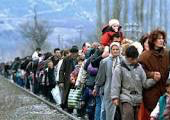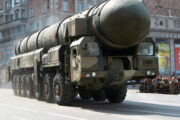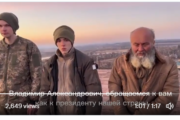By James Bissett,
Former Canadian ambassador and head of the Canadian Immigration Service 1985 -1990
If you take them they will come. This reality explains the uneasy truth about mass migratory and refugee movements. What might be seen at first as a humanitarian gesture to help resolve a refugee crisis often mutates into an uncontrolled and unmanageable migratory flow of people seeking a better life- and if you keep taking them they will keep coming.
This is not a new revelation and it explains why the United States after initially welcoming thousands of Cubans and Haitians as refugees in the 1970s and 1980s realized the flow had to be stopped and did so by interdicting ships carrying the refugees and sending them back to their homelands. For a number of years now Australia, after receiving large numbers of asylum seekers has essentially stopped the flow by intercepting ships and preventing their cargo from landing.
In 1986 there were more refugees leaving Vietnam than there had been in the immediate years following the fall of Saigon in 1975. The large numbers had created an international crisis and serious backlash in the countries of first asylum. In 1989 under the auspices of the United Nations it was decided to stop the flow and send back those who were unable to meet the UN Convention definition of “refugee.” This repatriation programme effectively ended the movement.
The practice of resettling refugees in countries enjoying a high standard of living has proven to lead to more arrivals, to encourage human trafficking, and to result in unacceptable high costs and potential hostility towards the newcomers. It was for these reasons that the United Nations High Commissioner for Refugees (UNHCR) has accepted that “third country resettlement” is not the preferred solution to a refugee crisis. Prevention, containment, and local resettlement are the favoured options.
There are other reasons why providing protection in the first country of asylum is the first option and why it is assumed that refugees fleeing persecution should seek protection in the first “safe” country entered. Offering protection and care in a neighbouring country makes it easier and faster for the refugees to return home when stability is returned to their own country. However, the primary reason is that the costs are dramatically lower than resettlement in a more distant country.
It takes from $25,000 – $40,000 to settle a refugee in a third country, whereas the costs of protecting and caring for a refugee in a camp are a fraction of that amount. Accepting 10,000 government refugees will cost Canada close to $300 million dollars. Obviously, this amount would be much more effectively used by donating it to the UNHCR to help that agency care for the 60 million people under its jurisdiction – our contribution so far this year to the UNHCR’s annual budget has been a minimal 64 million dollars.
We should also be aware that the vast majority of the people now flowing into Europe had already found protection in Turkey, Jordan, Lebanon or Egypt. Their onward journey to reach Germany or Sweden is not to find protection from persecution or violence but to enjoy a better standard of living. This is not to condemn these unfortunate victims of a brutal civil war but to be aware that a mass migration of this kind can quickly get out of control and create chaos and instability in the receiving countries.
The current flow of many thousands of refugees from the violence in the Middle East and from hunger and famine in Africa is surely only the beginning of a massive population shift from the poor countries of the world to the more prosperous nations of the west. In the long term it may prove to be impossible to stop this population transformation but a quick end must be found to end the current crisis and this cannot be done allowing people to cross international borders with impunity and demand to have passage to their country of choice.
Territorial integrity and the sovereignty of borders have been the twin principles of international law since the treaty of Westphalia in 1648. They are enshrined in the United Nations Charter and have formed the very framework of our global security system. The current mass influx of close to a million migrants into the European Union so far this year poses a direct threat to these principles and if not curtailed and managed threatens the very basis of western civilization.
Although this is an immediate problem for Europe it needs an international effort under the auspices of the UNHCR to resolve it. The staff and budget of the UNHCR must be urgently supplemented. The countries of first asylum must be provided with the financial means of protecting and caring for refugees and humanitarian cases. People arriving by sea should be intercepted and safely escorted back to where they came from. Refugees who are in a safe country should be prevented from attempting to cross borders without proper documentation. These measures have proven successful in the past in dealing with refugee crises and in managing mass migrations of people. However, the first step is to stop the flow – because if you take them they will come and if you keep taking them they will keep coming.
Originally Published in the Calgary Herald, Oct. 3, 2015


















